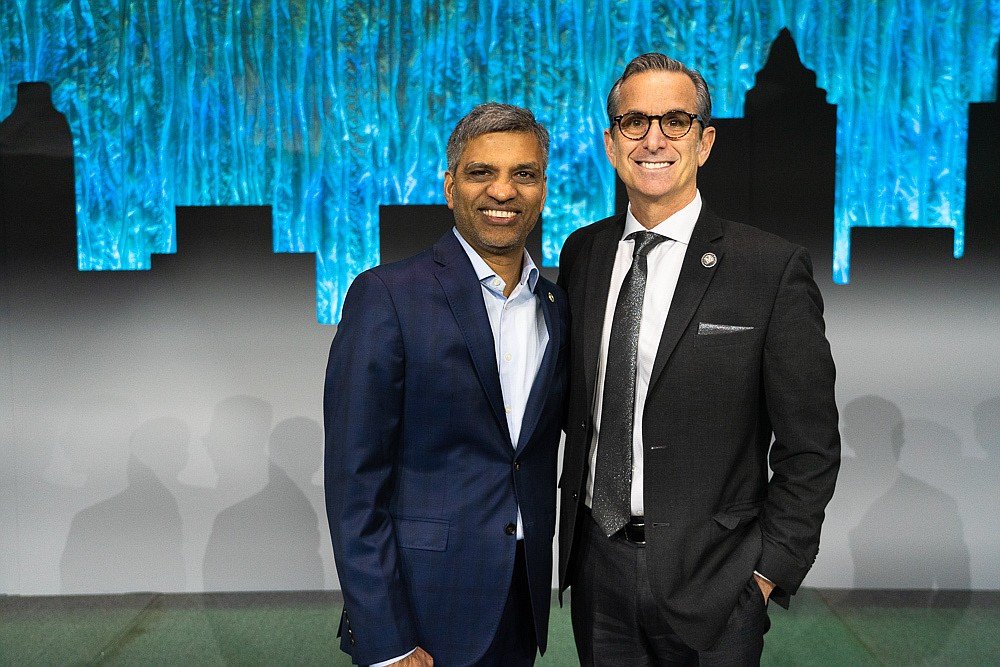The Heart of a Zero Emissions World: Why Marshall Gobuty is Ahead of the Curve on Accelerating to Zero
In the early 2000s, the growing green building movement heavily focused on the commercial real estate sector. Given the increasingly worrisome carbon footprint of corporate building portfolios, it’s understandable that focusing on improving the sustainability of individual homes took more time to gain steam.
But Marshall Gobuty was ahead of the curve in this regard. In fact, Marshall’s relentless belief that profitability, sustainability and scalability needn’t be mutually exclusive quickly cemented him as one of the earliest, most effective and most innovative adopters of green home building.
Flash forward into his second decade of home building, and we can unequivocally see not only how he has accurately telegraphed the uphill battles of our warming world and worked to address these challenges before they become irreversible in impact, but he has now emerged as the definitive leader for net zero home building.
Put simply, no one else is doing what Marshall is doing — and, importantly, doing it at scale.
Marshall and I met during my tenure as President and CEO of the U.S. Green Building Council. He and I developed a close relationship that yielded LEED Platinum and LEED Zero certifications for his Pearl Homes’ communities — but that was just one piece of his pioneering work. While his insights were largely overlooked at the turn of the century, they proved incredibly valuable in how we established an effective framework for LEED for Cities and Communities.
In fact, what Marshall understood long before many others is something I too had been sounding the alarm on since growing up in India in nearly uninhabitable conditions. We both knew that people were going to need more incremental access points for mitigating and zeroing out our carbon footprints. Homes make up communities and communities make up cities. Cities, and particularly cities with explosive population growth, would need tools for tackling the carbon footprints of much more than its largest, most notable structures.
In 2015, we turned our shared passion into action. With his perpetual drive to connect sustainability to tangible business results and profitability, and in collaboration with USGBC, Marshall secured LEED Platinum certification for Mirabella, an active adult community of 160 sustainable homes in Bradenton, Florida. A four-time recipient of USGBC’s elite Power Builder of the Year recognition, Marshall is also the net zero custodian behind Hunters Point, a Pearl Homes community that in 2018 became the world’s first LEED Zero home. And today, under Marshall’s extraordinary stewardship, the Hunters Point community boasts a HERS index rating of -13.
Hunters Point’s 86 luxuriously designed homes self-generate their own power and are either net zero or net positive. To Marshall and Pearl Homes’ credit, this burgeoning net zero community is not a one-off. Quite the contrary, Hunters Point is a case study in what’s replicable for all residential projects across the U.S. It’s 20-57% net positive projections for power exported back to the grid are unprecedented — and with 8,000 kWh for a single home lot in Hunters Point going back to the grid, that’s enough to power four homes’ air conditioning use for a year, cover the average home’s total electricity use for 266 days a year and keep a fridge or freezer running for 1,000 days.
Now consider that innovation at scale. Suppose you took the 8,000 kWh that a single home lot at Hunters Point exports back to the grid and extended those savings to the 142 million housing units across America. In that case, you’d see savings of 423.87 million metric tons of carbon dioxide equivalent. The opportunities for moving us closer to a net zero world by tapping into this sector are astonishing.
This is precisely why I’m thrilled that Marshall and his team at Pearl Homes have partnered with us at The Global Network for Zero. I’m honored to know that GNFZ’s mission to accelerate the realization of a zero-emissions world is shared by the Pearl Homes family and that together, we will be able to ensure that it can be scaled affordably and serve as a critical access point for incremental change in the race to zero.
For Marshall, for me and for our teams, this collaborative approach is personal. He has, for decades, been advocating to the building community and the world at large, that residential construction can be ground zero for net zero progress — and he believes, just as we all do, that there is no room for gatekeeping in an existential crisis.
As such, Hunters Point and, more specifically, Marshall’s visionary work to showcase the range and dynamic capabilities of Pearl Homes’ technology is just the beginning. I’m confident that with his leadership and advocacy for visibility into his organization’s net zero construction practices, and with GNFZ’s revolutionary platform for expanding and replicating success stories such as these, we can expect to see and feel the results of something he tried to stir our souls about long ago:
Home is where the heart of the green building movement is — and because of Marshall’s example, it is where we will see our emissions targets not only hit, but accelerated at scale.

